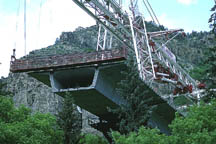STRUCTURAL ENGINEERING
Kavanagh Lecture - Abstract
The Inaugural Thomas C. Kavanagh Memorial Structural Engineering Lecture
April 7, 1993
Fatigue Cracking in Steel Bridges and Techniques for Retrofitting
by
Dr. John W. Fisher
Joseph T. Stuart Professor of Civil Engineering
Director, NSF Engineering Research Center: Advanced Technology for Large
Structural Systems (ATLSS)
Lehigh University
ABSTRACT
Fatigue cracking in steel bridges in the United States has become more frequent in its occurrence during the last two decades. Among the early occurrences of cracking in the 1960's, was distortion related cracking in the stringers of suspension bridges. The 1970's resulted in fatigue cracking at a large number of details. They included low fatigue resistant welded details (Categories E and E') such as cover-plated beams and equivalent lateral gusset plates, defective groove welds in secondary attachments such as longitudinal stiffeners, lack-of-fusion in cover plate and flange groove welds and at flange penetrations of intersecting web members. These resulted from an inadequate experimental base and overly optimistic specification provision developed from the experimental data in the 1960's. Subsequent laboratory data has verified the low fatigue strength in the high cycle region. The assumption of a fatigue limit at 2 x 106 cycles proved to be incorrect. Cracking due to distortion has continued to increase, afflicting nearly ever type of bridge. It results from small web gaps which were more frequently used with welded structures.

